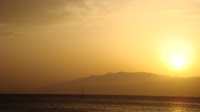Pregunta: Hola, estoy aprendiendo español y sé que las palabras terminadas en -a son femeninas y en -o son masculinas. Pero ¿qué pasa con el resto de palabras como ratón, puente, etc.? ¿Cómo puedo saber si son femeninas o masculinas?
Hola “K. from C.” y gracias por tu pregunta. (La próxima vez me gustaría por favor saber tu nombre y nacionalidad J)
Después de haber observado y analizado el género de una gran selección de palabras, aquí tenéis un cuadro orientativo que he hecho y que espero que os ayude. De todas formas, el consejo es aprender siempre las palabras con su artículo (el problema, la mano, el puente, el día, la flor, etc.)
MASCULINOS MASCULINE (Casi todos) los nombres en singular terminados en (almost all) singular nouns ending in | FEMENINOS FEMININE (Casi todos) los nombres en singular terminados en (almost all) singular nouns ending in |
- o, - é, - í, - én (en) - ón, - ín, - l, - s, - r -ema | - a, - dad, - ción, - sión - d, - z, - sis |
MASCULINOS o FEMENINOS MASCULINE or FEMININE los nombres en singular terminados en singular nouns ending in |
- e, - ista |
Con independencia de la terminación de la palabra, siempre se respetará el género “natural” del nombre, es decir, el rey será masculino y la canciller, si es mujer, será femenino. Para comprobar la validez del cuadro anterior, seleccionad totalmente al azar fragmentos de libros y haced la prueba vosotros mismos. Espero vuestros comentarios.
Question: Hey, I am learning Spanish and I know that words with an ending of -a are feminine and with an -o masculine - but what is with all the other words like ratón, puente etc. How can I know if there are feminine or masculine?
Hello “K. from C.” and thank you for your question. (Please, next time with your name and nationality J)
Her you have an orientative chart that I made looking and analysing the grammatical gender of many different words. I hope that it’s helpfully for you. Anyway, the recommendation is to learn all the words always togheter with its article (el problema, la mano, el puente, el día, la flor, etc.) Independently of the end of the word, the “natural” gender will be always respected, that’s means that “rey” (king) will be masculine and “canciller” (chancellor), if she’s a woman, will be feminine. To check the effectiveness of the previous chart, choose many texts by chance and test it yourself. I´m waiting for your comments.










